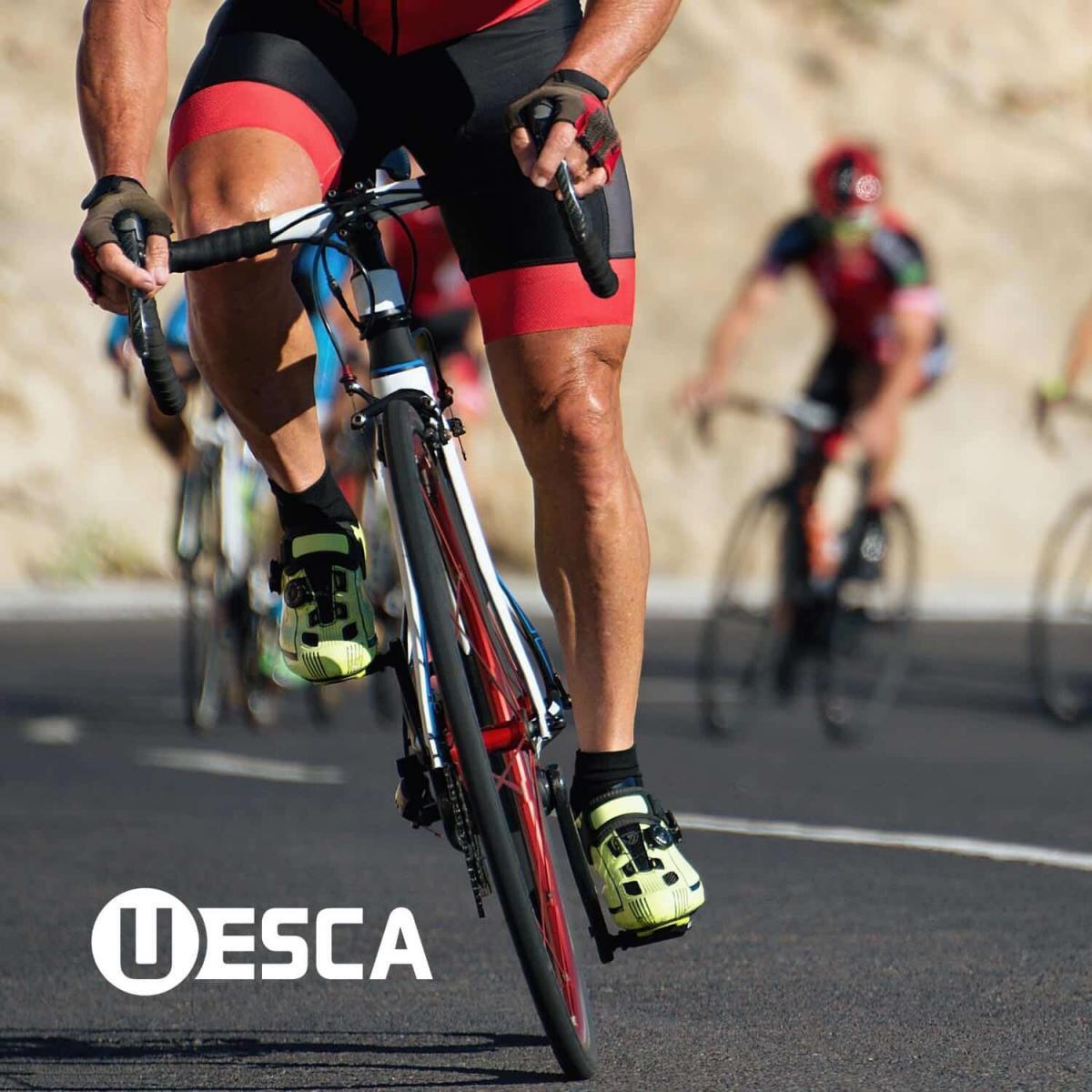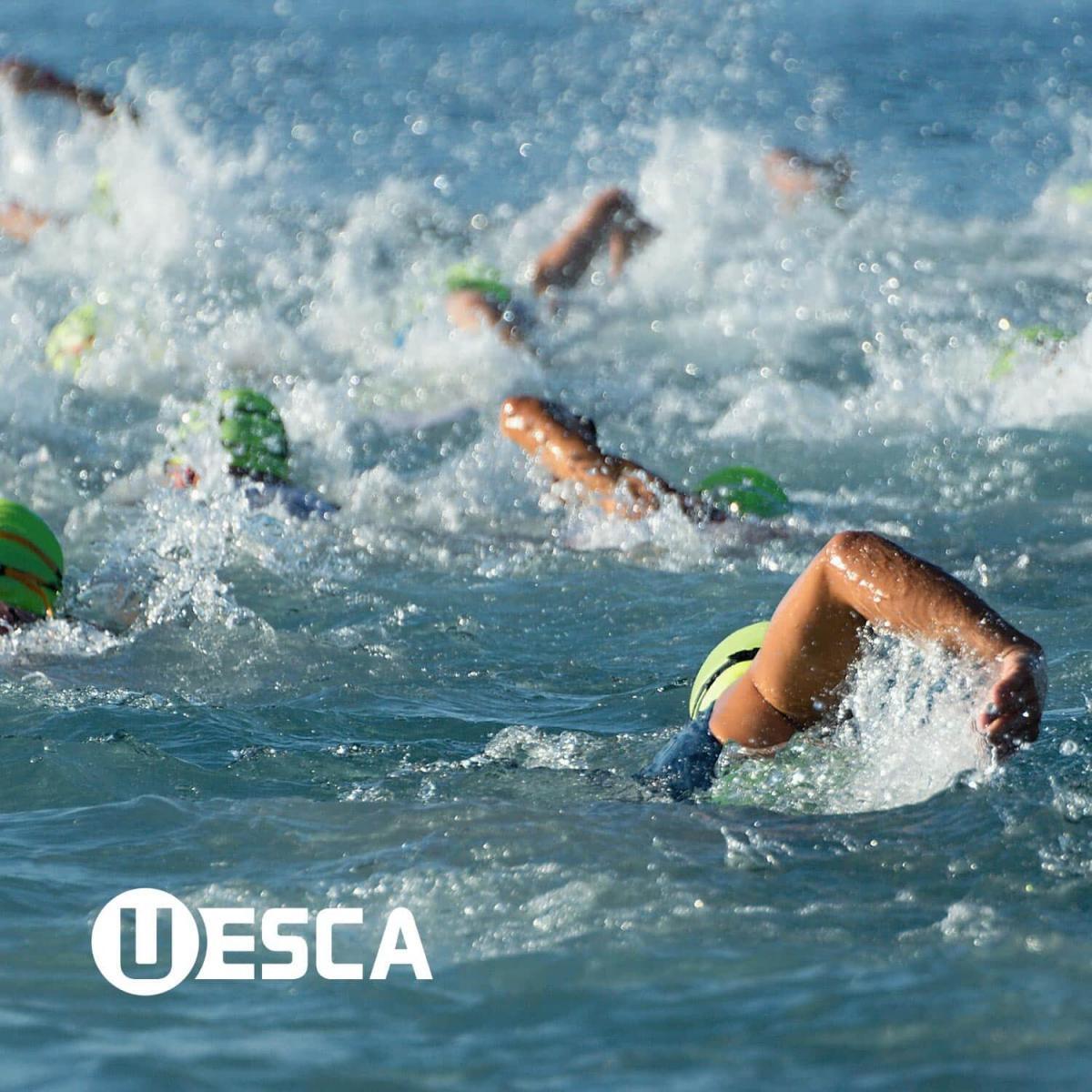Aerodynamics is clearly very important in cycling. There are many different ways aerodynamics can be affected and we go over all the bigger players here.
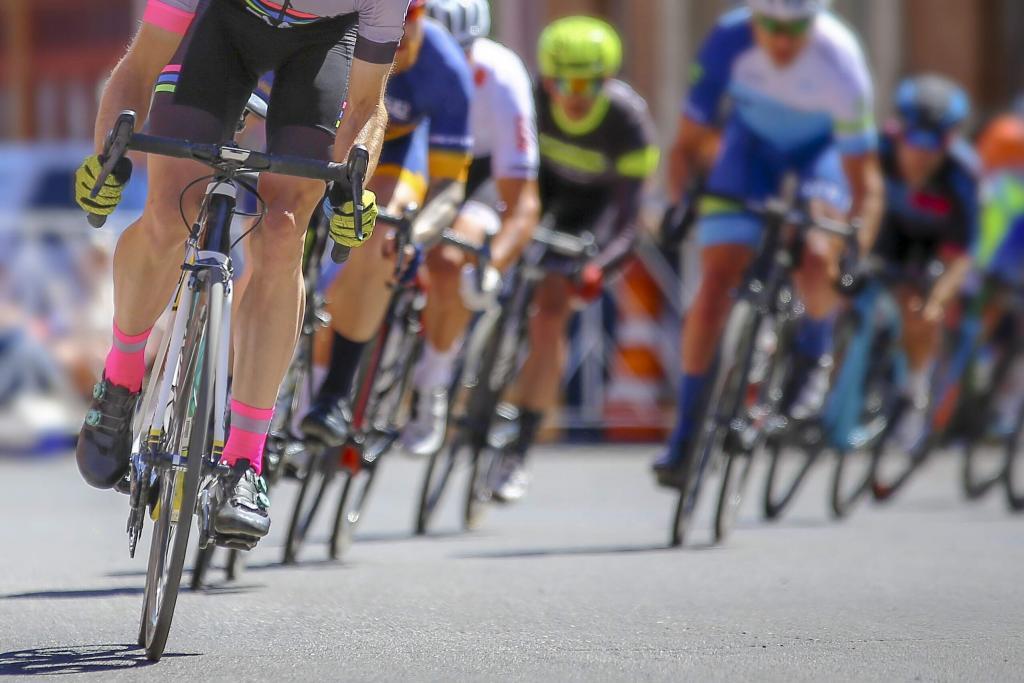
If you’re an avid triathlete or road cyclist, you likely geek out over slippery looking bikes and have an odd knowledge of terms such as ‘coefficient of drag’ and ‘yaw angles.’ However, despite familiarity with some aerodynamic terms and all of the marketing done by bike, clothing and gear companies in terms of aerodynamics; the real-world application of aerodynamics is still largely an unknown quantity to most cyclists and triathletes. Therefore, like myself, I hope that you find a lot of this information to be surprising cycling aerodynamic facts!
In UESCA’s Cycling Coach Certification, we devote an entire module to cycling aerodynamics – primarily contributed by Dr. Nathan Barry, head of aerodynamics for Cannondale. Thus, information in this blog is largely from his research and findings.
Not Only At High Speeds
Perhaps the most common misnomer in regard to aerodynamics is that it only matters at ‘high’ speeds. While aerodynamic resistance increases as a cyclist rides faster, that does not mean that aerodynamics is not important at lower speeds. In other words, there is not a set speed at which aerodynamics suddenly becomes important. In fact, as illustrated in the chart below, at ~ 18 km/h (11.2 mph), aerodynamics becomes the dominant form of resistance.
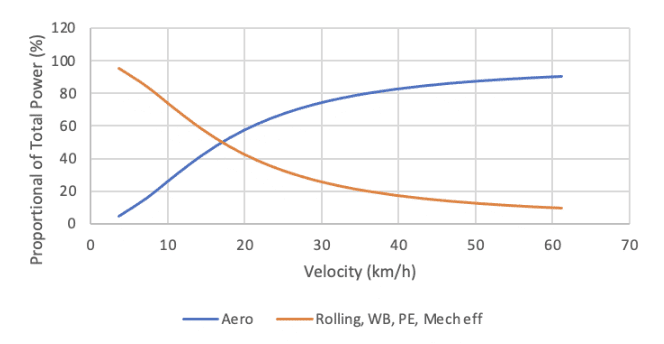
Climbing Tipping Point
Generally speaking, aerodynamic road bikes weight a bit more than lightweight road bikes designed for climbing. Before we go any further it’s important to note that while an ‘aero’ bike may weight a bit more than a ‘climbing’ bike, the weight difference, and even the weight of the bike as a whole pales by comparison to the rider themselves.
One clear conclusion from the trade-off between weight and aerodynamics when climbing is that at some gradient, speed will reduce so far that aerodynamic savings will become less effective than saving weight. This is obviously a function of how large the savings in weight or drag are and how strong the rider is. Since stronger riders climb faster, the aerodynamic terms will be larger at steeper gradients and thus aerodynamic savings can deliver performance savings at relatively steeper gradients than a slower rider.
A useful analysis in assessing weight vs aerodynamic optimization is to consider where this tipping point occurs. Clearly this is not a general solution as it is a function of a particular rider and the changes to drag or weight being considered. But for a given set of configurations with two weights and masses we can evaluate where the cross over point in performance occurs. For example, consider a classic lightweight climbing bike with round tubes vs a modern aero road bike with deep airfoil style tube cross sections. In this case the classic climbing bike has less weight but will have more drag. A key question for an athlete would be, what is the difference between these two bikes at different gradients and how steep does the road need to be to justify the lighter weight but higher drag bike choice.
The figure below shows this tipping point as a time saving per kilometer travelled at that gradient. At 0% grade, the aero bike would save 3 sec for every kilometer travelled. In this scenario, the aero bike would be faster than the “climbing bike” on any slope up to ~ 5.5% – the tipping point. Beyond this point the climbing bike is more efficient and saves time over the aero bike. But the road needs to be very steep for a long time to realize these savings. Keep in mind many of the most grueling grand tour (ex: Tour De France) climbs average around 7% grade. And the figures used in this model are for an amateur level cyclist. A faster and lighter cyclist typically pushes this tipping point up towards a 7% grade.
Also consider the length of the climb. A 10% grade for 4 km is a brutal climb and yet the heavier aero bike would only lose 10 sec to the climbing bike.
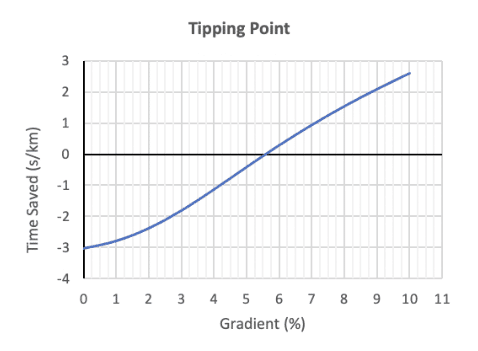
Rider Position
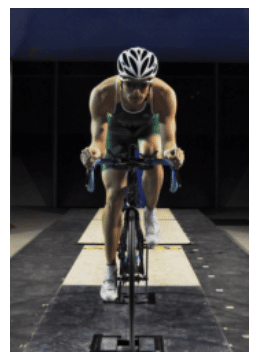
Most road bikes are equipped with ‘drop’ handlebars that offer three primary hand positions.
- Top of bars ‘tops’
- On the brake hoods ‘hoods’
- On the downward curved section of the bars below ‘drops’
Since the ‘drops’ position is the lowest hand position of the three, it is a common assumption that riding with the hands in the ‘drops’ is the most aerodynamic position. However, as illustrated in the below chart, the most aerodynamic position on a road bike with ‘drop’ handlebars is with the hands on the hoods with the forearms horizontal.
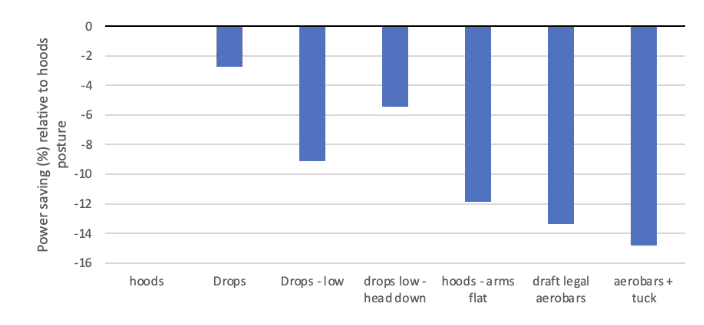
Sprinting
Sprinting is a max power, high speed effort where you need to be in the wind to win and so an obvious application for a low drag setup. Consider the same values above, in the final 200m of a sprint at 60 km/h. At this speed it would require a rider to produce ~ 1000W for a little over 10 seconds.
For two riders that accelerate at the same time, the aero bike would finish the final 200m sprint 0.4 sec faster. This doesn’t sound like much, but at these speeds that corresponds to 7.2 m – 4 bike lengths.
Paceline – It Benefits Everyone!
It is common knowledge that riding behind another rider (drafting) saves energy by reducing aerodynamic drag. However, what is less commonly understood is that in a paceline, the leading rider also saves energy (approximately 3-5%). But how?
As pressure drag is the dominant form of air resistance acting on a rider, the difference in pressure between the front and the rear of the rider (lower at the rear) results in a net force rearward – this is drag. The wake of a rider is always a low-pressure region because of separation and the slow turbulent flow in the wake. However, if you put something in that wake (i.e., another rider in a paceline), it occupies some of what would be a low-pressure wake and thus reduces the pressure drag acting on the leading body. Put simply, the rear rider is sitting in the wake of the leader, occupying what would be a low-pressure wake, thus reducing the pressure difference across the leader.
Overtaking Another Rider
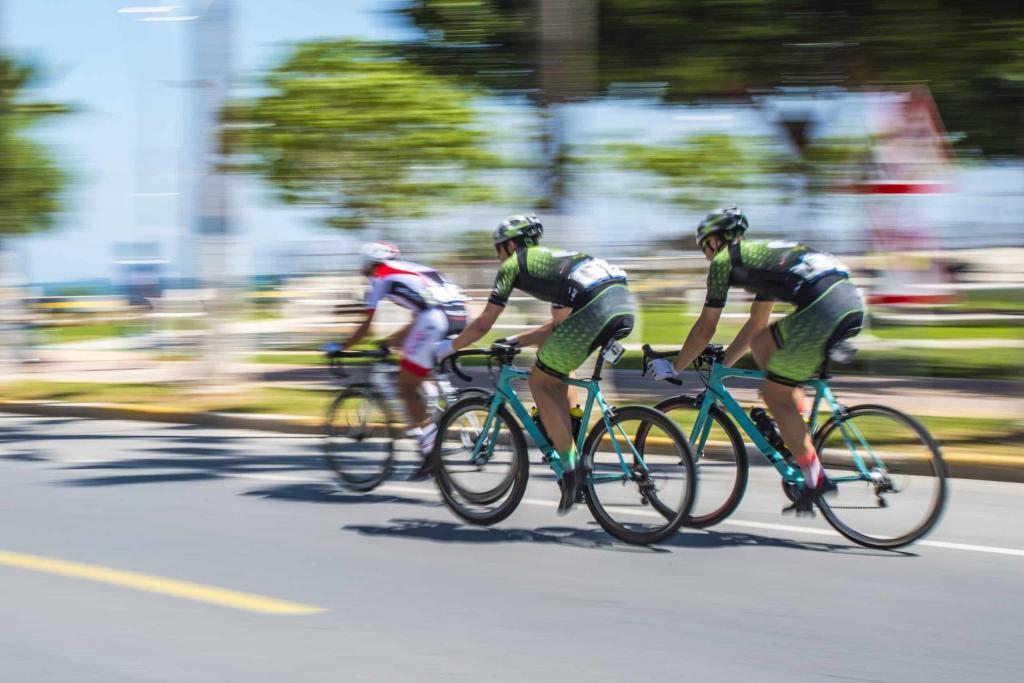
OK, I’ll admit it – of all of the things that I learned from Dr. Barry in developing this module for the UESCA Cycling Certification, this was the one that took me completely by surprise. As a longtime racer, I always assumed that when overtaking another rider, from an aerodynamic standpoint, it must be more efficient to pass as close as possible to the other rider to get some form of draft off of them. How wrong I was!
During a rotating paceline, as well as in other road racing situations such as attacking and sprinting, overtaking another cyclist is commonplace. Therefore, understanding how drag is influenced by the spatial relationship between one rider overtaking another is of importance.
When two riders are traveling side-by-side they actually experience an increase in drag. This can be as high as 6% above the isolated rider value. Whilst small, in the case of launching an attack or riding with competitors rather than teammates, it is not an insignificant amount.
This peak of 6% increase occurs when two riders are very close in a tight formation. This effect falls away quite quickly as the distance between riders is increased. By the time riders center lines are separated by 1500mm the drag increase is no longer in effect.
In the case of a working paceline, keeping reasonably close to a rider can be important for sheltering the others in the group. However, when launching an attack or in a sprint, having some extra air will minimize any potential drag increase as two riders pass one another.
Summary
I hope that this post brought to light one more areas of aerodynamics that you were unaware of and more specifically, I hope that you will be able to use to your benefit in your riding and racing. If anything else, perhaps you can now justify buying that sleek aero bike that you’ve had your eye on!!


